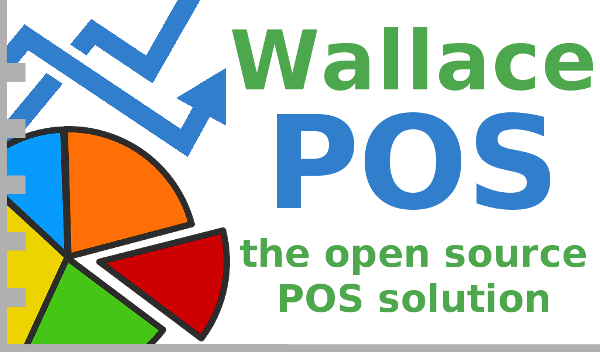This is fork of amazing project wallacepos which is not maintained now.
We have decied to take this to next level and planed to make it best mobile pos app for everyone.
We have developed below features.
Show customer total balance while selecting customer on invoice page.
Multiple File/Bills upload options in invoices/sales popup.
Settings to write own custom css/js code from settings page.
Few bug fixes in generate invoice page, it seems non-working after csrf added
Have plans to add more features Custom Status field and option to change it
Trigger Sms etc
Simple Portal for Customer to Place Oder online and order gets synced to dashboard
Android/iOS apps etc
Much more
We are planning to enhance and work on this with dedicated resources,
This repo is not updated with setup instructions etc , we are going to do it soon.
Show customer total balance while selecting customer on invoice page. Multiple File/Bills upload options in invoices/sales popup. Settings to write own custom css/js code from settings page. Few bug fixes in generate invoice page, it seems non-working after csrf added
WallacePOS uses the power of the modern web to provide an easy to use & extensible POS system.
It supports standard POS hardware including receipt printers, cashdraws and barcode scanners.
With a rich administration dashboard and reporting features, WallacePOS brings benefits to managers and staff alike.
Take your business into the cloud with WallacePOS!
To find out more about WallacePOS, head over to wallacepos.com
If you find that WallacePOS is the perfect companion for your business, please donate to support further development.
WallacePOS requires:
-
A Lamp server with PHP version>=5.4, PHP cURL & GD extensions and Apache version>=2.4.7 with modules rewrite, proxy_http and proxy_wstunnel.
- You can enable the modules by typing the following in your terminal
sudo a2enmod proxy_http proxy_wstunnel rewrite sudo apt-get install php5-curl php5-gd sudo service apache2 restart- The following virtual host snippet in your apache config, replace %*% with your values and modify to your needs.
<VirtualHost *:443> DocumentRoot %/your_install_dir% ServerName %your.server.fqdn% ErrorLog ${APACHE_LOG_DIR}/error.log CustomLog ${APACHE_LOG_DIR}/access.log combined SSLEngine on SSLCipherSuite !ADH:!DSS:!RC4:HIGH:+3DES:+RC4 SSLProtocol all -SSLv2 -SSLv3 SSLCertificateFile %certificate_location% SSLCertificateKeyFile %key_location% SSLCertificateChainFile %cert_chain_location% <Directory %/your_install_dir%> AllowOverride all </Directory> # WSPROXY CONF ProxyRequests Off ProxyPreserveHost On <Proxy *> Order deny,allow Allow from all </Proxy> RewriteEngine On RewriteCond %{HTTP:Connection} Upgrade [NC] RewriteRule /(.*) ws://localhost:8080/$1 [P,L] ProxyPass /socket.io http://localhost:8080/socket.io/ ProxyPassReverse /socket.io http://localhost:8080/socket.io/ <Location /socket.io> Order allow,deny Allow from all </Location> </VirtualHost>Note: Using plain http is not recommended.
-
Node.js installed along with the socket.io library
For a Debian distro:
sudo apt-get update sudo apt-get install nodejs && apt-get install npm cd %/your_install_dir%/api sudo npm install socket.io
-
Clone the latest WallacePOS release to %your_install_dir% if you haven't done so already. The installation dir must be your Apache document root directory!
-
Run
composer installin your install directory to update PHP dependencies (you may need to install composer first). -
Visit /installer in your browser & follow the installation wizard.
-
Login to the admin dashboard at /admin, from the menu go to Settings -> Utilities and make sure the feed server has been started successfully.
To deploy WallacePOS on dokku:
-
Install the dokku-apt plugin on your dokku host.
-
Fork the WallacePOS to a PRIVATE repo (IMPORTANT), edit /library/wpos/.dbconfig.json and fill in your own values.
OR
Use my dokku mysql plugin to create and link the database automagically.
-
Commit deploy in the usual manner.
-
Setup persistent storage by running:
dokku storage:mount %APP_NAME% /var/lib/dokku/data/storage/%APP_NAME%:/app/docsWARINING: Failure to do so will lead to data loss during subsequent upgrades.
-
Access /installer/?install from the web browser to install the database schema & templates
-
Login to the admin dashboard at /admin using credentials admin:admin & change the default passwords in Settings -> Staff & Admins!

